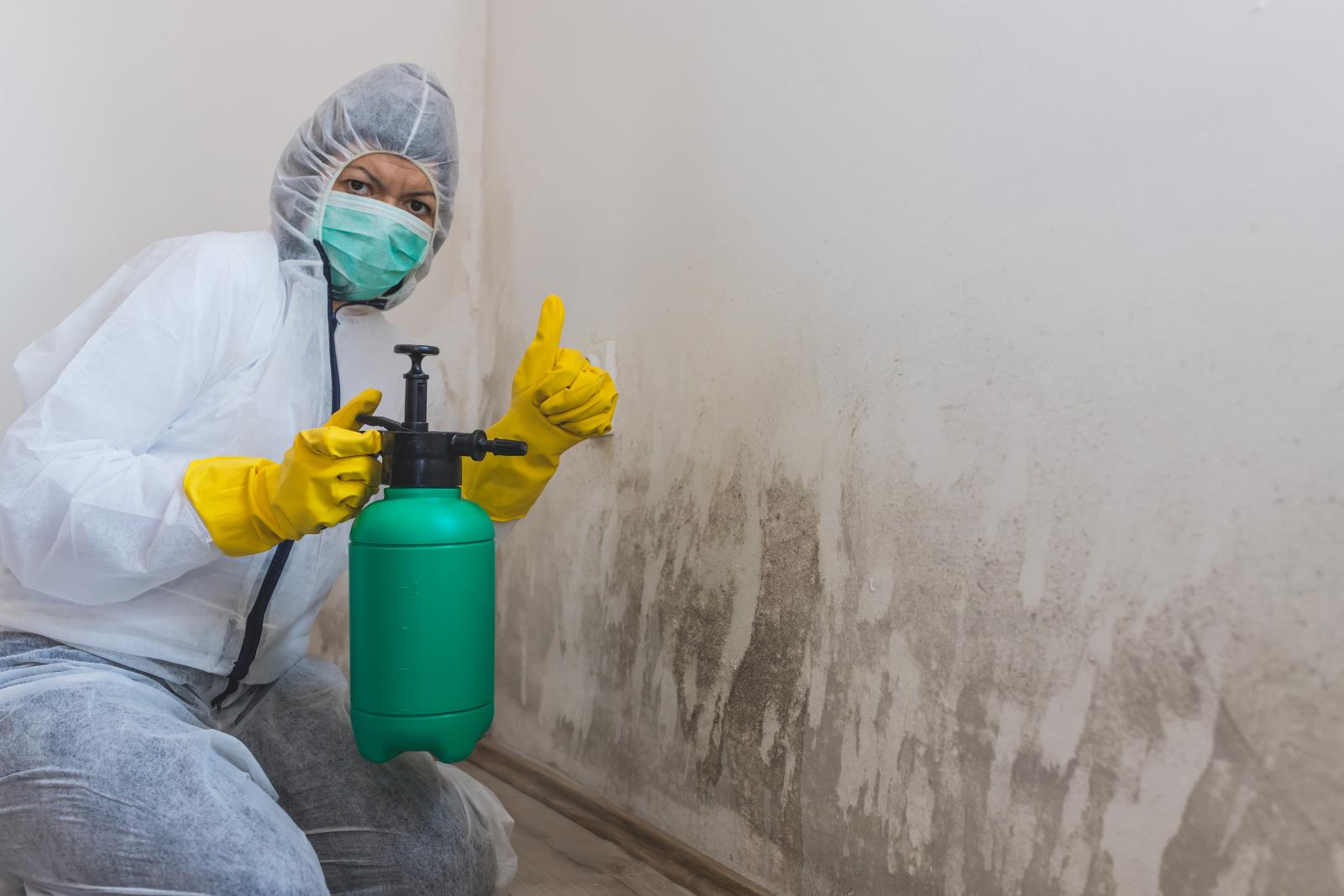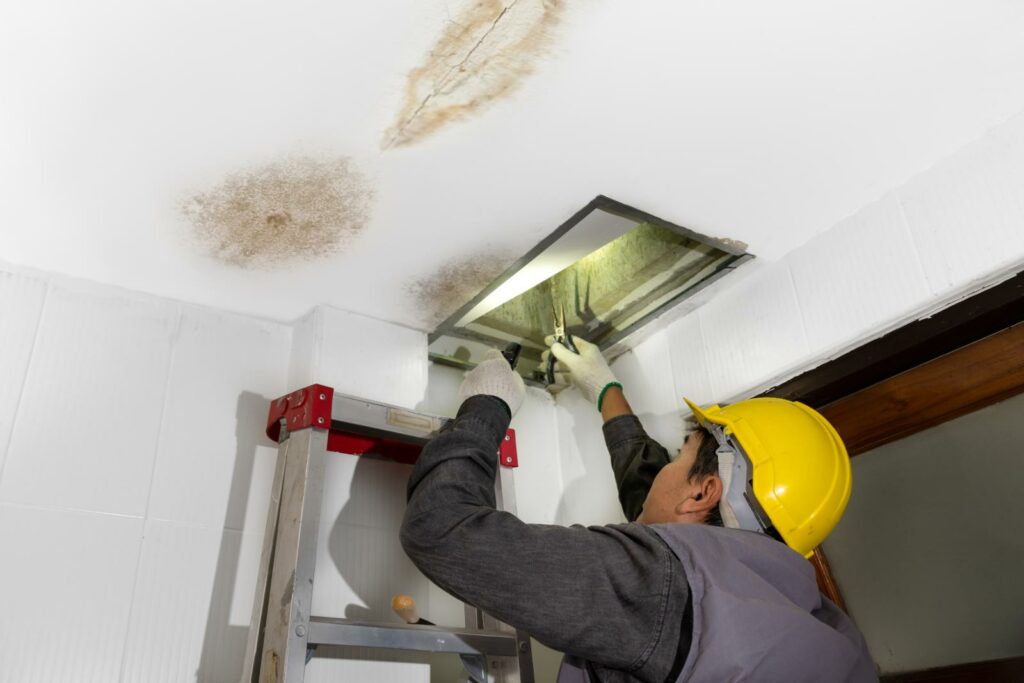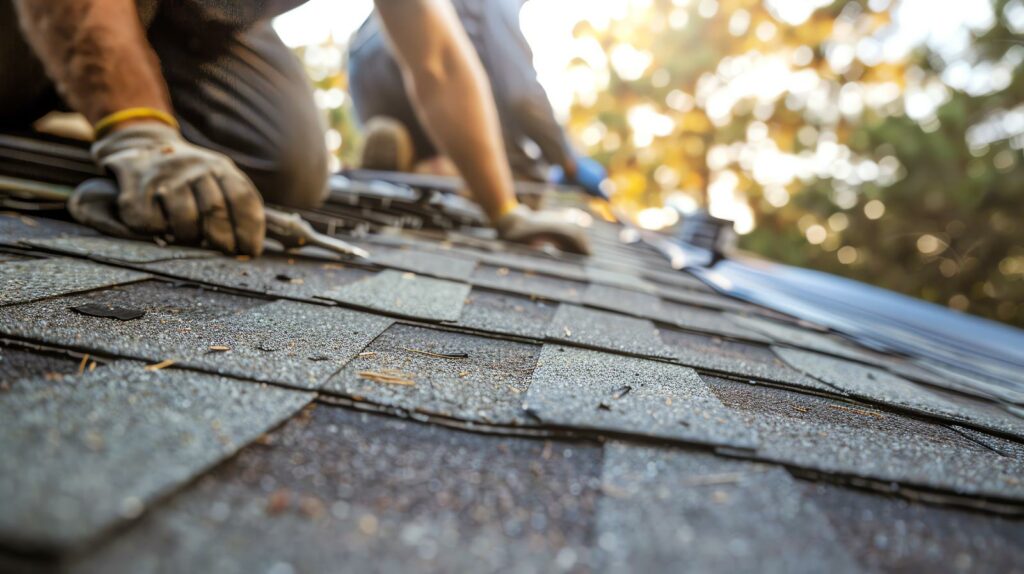Contents
When tackling mold in your living space, the variety of removal methods can leave you pondering the most effective solution. The choice between DIY remedies and professional assistance can be pivotal in ensuring a thorough and lasting eradication of mold. Understanding the nuances of each approach and the factors that influence their effectiveness is key to making an informed decision. Let’s explore the intricacies of mold removal methods to help you navigate this important process with confidence and clarity.
Key Takeaways
- Identify moisture sources to prevent mold growth.
- Use containment measures during removal to limit spread.
- Seek professional assistance for extensive infestations.
- Opt for eco-friendly, non-toxic removal products.
- Implement moisture control strategies to prevent recurrence.
Importance of Quick Mold Removal
To effectively mitigate the potential health risks associated with mold exposure, swift mold removal is essential. Mold spores can trigger allergic reactions, asthma attacks, respiratory issues, and other health complications. Prompt removal is imperative to prevent these health risks from escalating.
Not only does mold pose health risks, but it can also cause significant property damage. Mold growth can lead to structural deterioration, compromising the integrity of buildings and belongings. If left unchecked, mold can spread rapidly, affecting larger areas and increasing the costs of remediation.
Quick mold removal is essential in minimizing the health risks and property damage associated with mold infestations. Professional remediation services can swiftly identify and eradicate mold, preventing its negative consequences. By addressing mold growth promptly, you safeguard the health of occupants and preserve the structural integrity of the property. Remember, swift action is key when dealing with mold to protect both health and property.
Understanding Mold Growth Factors
To effectively combat mold growth, understanding the conditions that promote its development is essential. Factors such as humidity levels, poor ventilation, and water leaks can create the perfect environment for mold to thrive.
Mold Growth Conditions
Understanding the factors that contribute to mold growth is essential for effective mold removal strategies. Mold thrives in environments with moisture, making moisture prevention vital for mold prevention.
Humidity control is another key aspect, as high humidity levels create favorable conditions for mold growth. Mold requires organic material to feed on, along with warmth and oxygen, but it’s most notably influenced by moisture content in the air and on surfaces.
The presence of water or dampness accelerates mold proliferation, emphasizing the importance of promptly addressing any water leaks or spills. By controlling humidity levels and practicing moisture prevention, you can greatly reduce the likelihood of mold growth in your environment.
Preventing Mold Infestation
Mold infestation prevention hinges on mastering the factors that drive mold growth in your environment. Two critical elements to ponder are humidity control and proper ventilation.
Mold thrives in moist environments with high humidity levels above 60%. To prevent mold from taking hold, maintain indoor humidity levels between 30-50% through the use of dehumidifiers or air conditioners.
Proper ventilation is equally important as it helps to circulate air and prevent moisture buildup. Make sure that areas prone to dampness, such as bathrooms and basements, are adequately ventilated.
Key Steps in Mold Remediation
When addressing mold remediation, the initial step involves identifying the source of moisture that’s fueling the mold growth. Once the source is located, it’s important to address it promptly to prevent further mold proliferation.
Mold spore containment is essential during the remediation process to prevent the spread of spores to clean areas. Effective mold prevention strategies should be implemented to inhibit future mold growth. Safe mold removal practices must be followed to guarantee the health and safety of those involved in the remediation process.
Proper disposal of contaminated materials is imperative to prevent recontamination. Thorough cleaning and disinfection of the affected areas are necessary to eliminate any remaining mold residues. Monitoring the treated areas post-remediation is crucial to ensure the effectiveness of the remediation process.
Choosing the Right Mold Removal Technique
To effectively address mold issues, the selection of an appropriate mold removal technique is crucial in guaranteeing the successful eradication of mold infestations. When choosing a method, consider DIY options for minor mold problems. DIY solutions like vinegar, hydrogen peroxide, or baking soda can be effective for small-scale mold removal. However, for larger infestations or extensive mold growth, it’s advisable to seek professional help to make certain thorough removal.
In addition to traditional methods, consider eco-friendly solutions when selecting a mold removal technique. Eco-friendly products are safer for both the environment and your health. Look for products that are biodegradable, non-toxic, and don’t contain harsh chemicals. Some eco-friendly options include tea tree oil, grapefruit seed extract, or hydrogen peroxide-based cleaners. These alternatives can be just as effective as conventional mold removal products while being gentler on the environment.
Preventing Future Mold Infestations
To prevent future mold infestations, prioritize controlling moisture levels in your environment. Guarantee proper ventilation to reduce humidity and promote air circulation.
Regular inspections of susceptible areas are highly recommended to catch and address any mold growth early.
Moisture Control Tips
Effective mold prevention requires diligent moisture control measures to limit the growth and spread of mold spores. Utilizing dehumidifiers offers significant benefits by reducing excess moisture in the air, creating an unfavorable environment for mold.
Ventilation strategies, such as using exhaust fans in bathrooms and kitchens, help circulate air and prevent humidity buildup. Waterproofing solutions like sealing cracks and ensuring proper drainage outside your home can prevent water intrusion.
Regular moisture detection through simple tools like moisture meters can help identify problem areas early on. By implementing these moisture control tips, you can effectively reduce the likelihood of mold infestations in your home and maintain a healthy indoor environment.
Ventilation Importance
Implementing proper ventilation techniques is essential for preventing future mold infestations in your home. Good ventilation offers various benefits, such as improved air circulation, which helps maintain ideal indoor humidity levels and reduce the risk of mold growth. Additionally, adequate ventilation can also contribute to your overall health by minimizing the presence of mold spores and other harmful airborne particles. By ensuring proper airflow throughout your living spaces, you create an environment less favorable to mold development. Here’s a table summarizing the key points:
| Ventilation Benefits | Health Risks |
|---|---|
| Improved air circulation | Minimized mold spores |
| Reduced humidity levels | Decreased respiratory issues |
| Prevention of mold growth | Improved indoor air quality |
| Enhanced overall health | Allergy reduction |
Regular Inspections Recommended
Regular inspections of your home’s moisture-prone areas are crucial for effectively preventing future mold infestations. Conducting regular checks allows for early detection of any moisture issues, providing an opportunity to address them before mold can take hold.
The benefits of these inspections are significant, as they enable you to identify and rectify sources of excess moisture promptly, reducing the risk of mold growth. By implementing a routine schedule for moisture detection, you can proactively safeguard your home against potential mold infestations.
Professional Mold Removal Services
Utilizing professional mold removal services can greatly expedite the mitigation process and ensure thorough remediation. Professional mold removal companies have the expertise, tools, and experience to address mold issues in your home or business effectively. Below is a comparison table highlighting the key differences between DIY mold removal and professional mold removal services:
| Aspect | DIY Mold Removal | Professional Mold Removal Services |
|---|---|---|
| Expertise | Limited knowledge and experience | Highly trained professionals with expertise |
| Equipment | Basic tools and equipment | Specialized tools and advanced technology |
| Effectiveness | Varied results depending on skill level | Consistent and thorough removal of mold |
| Time | Time-consuming process | Efficient and quick remediation |
| Safety | Potential risks without proper precautions | Adherence to safety protocols for occupants |
Summary
When it comes to mold removal, it’s vital to act promptly and effectively to prevent further damage and health risks. Remember, ‘an ounce of prevention is worth a pound of cure.’
You can secure a successful outcome by understanding the factors that contribute to mold growth, taking key steps in remediation, and choosing the right removal technique.
Consider professional mold removal services for larger or persistent infestations to ensure thorough and safe removal.




